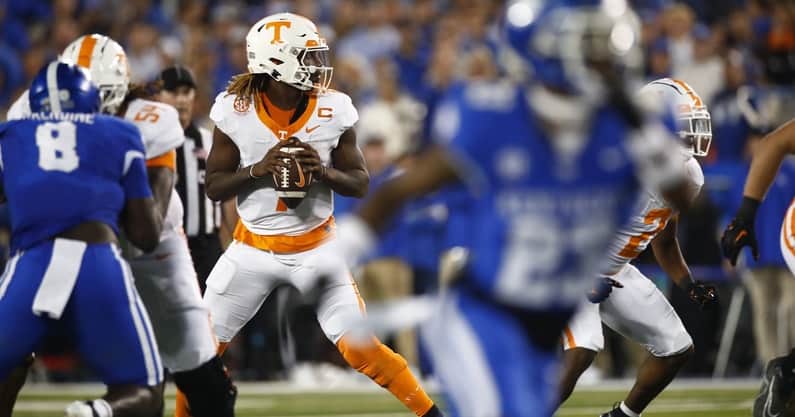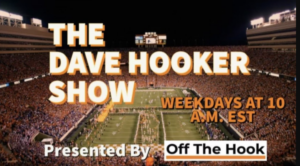The team that was the most efficient at scoring touchdowns in the red zone last year ranks among the worst this year.
Tennessee scored a touchdown 79.1% of the time when inside the opponent’s 20-yard line last season. But that rate has dipped to 51.4% this year – which ranks 111 in the nation.
Why the dropoff?
One reason could be that the Vols had a better runner at quarterback a year ago. UT also had a stronger offensive line, led by Darnell Wright and Jerome Carvin. And perhaps the play-calling is different.
Whatever the reason, the Vols (6-2, 3-2 SEC) need to fix it before facing Missouri and Georgia in the next two weeks.
It shouldn’t be a problem Saturday against UConn (1-7).
If it is, Tennessee has a greater issue than we imagined.
Scoring touchdowns in the red zone will be one of several sidebars to watch for in the noon kickoff.
Here are several others.
Has Dont’e Thornton arrived?
Thornton seemed to have as many drops as catches (seven) entering the Kentucky game. Against the Wildcats, he had three catches for 63 yards, including a 47-yarder.
If Thornton becomes the players the Vols thought they were getting from Oregon, that will make the offense much more effective and dangerous.
How will the secondary fare without Kamal Hadden?
Hadden was UT’s best cover corner this season, but season-ending shoulder surgery caused him to miss the Kentucky game.
Wildcats QB Devin Leary proceeded to have by far his best game of the season: 28 of 39 for 372 yards and two touchdowns.
Was that coincidence? Or did UT miss Hadden that much?
If UConn’s passing game torches Tennessee, we’ll know the answer.
How much will Nico Iamaleava play?
If things go as UT plans, the five-star freshman quarterback should play at least three series.
He is the future of UT’s offense. He needs to be good for the offense to be good next year.
Getting Iamaleava as many snaps as possible couldn’t hurt in terms of preparing him for next year. Especially running an offense in which reading defenses is so critical.
If Iamaleava doesn’t play at least three series, UT will be a closer-than-expected battle with the Huskies.
How will carries to divided?
Tennessee has a unique but pleasant problem: three running backs capable of big games.
Jaylen Wright has been UT’s most productive back, averaging 89 yards per game and 7.0 yards per carry. He had 120 yards on just 11 carries against Kentucky. He’s had two other games in which he has averaged over 9 yards per carry. He’s had only three games with at least 16 carries. If he averaged 16 carries per game, he would lead the SEC in rushing.
Jabari Small is averaging 52 yards per game and 5.1 yards per carry – lowest of the threesome. Three times he has rushed for more than 60 yards, but those games were against weaker opponents. Small has more carries than Dylan Sampson (82 to 66) but that might change before the end of the season.
Sampson is averaging 54 yards per game and 5.7 yards per carry. He has scored a team-high eight touchdowns. He gained 90 all-purpose yards in the fourth quarter of a victory over Kentucky. He didn’t play against Florida and had just three carries against Austin Peay and four carries against Alabama. He has proven he needs more touches in each game.
Look for each UT three-headed monsters at running back to have at least 10 touches.
Prediction: Tennessee 52, UConn 13.









